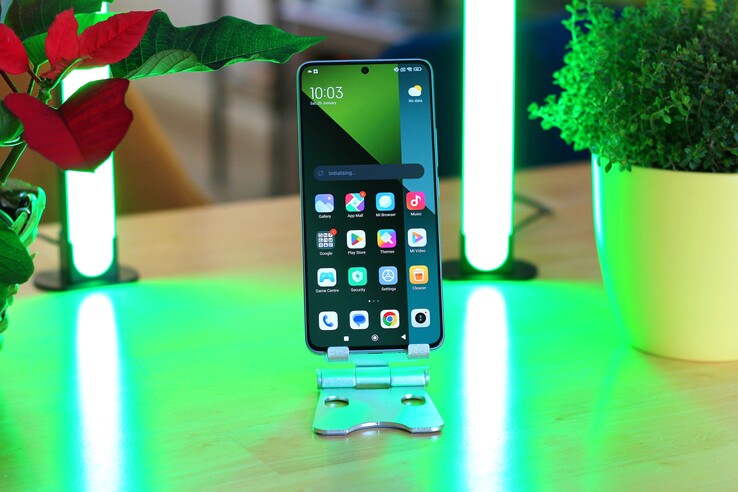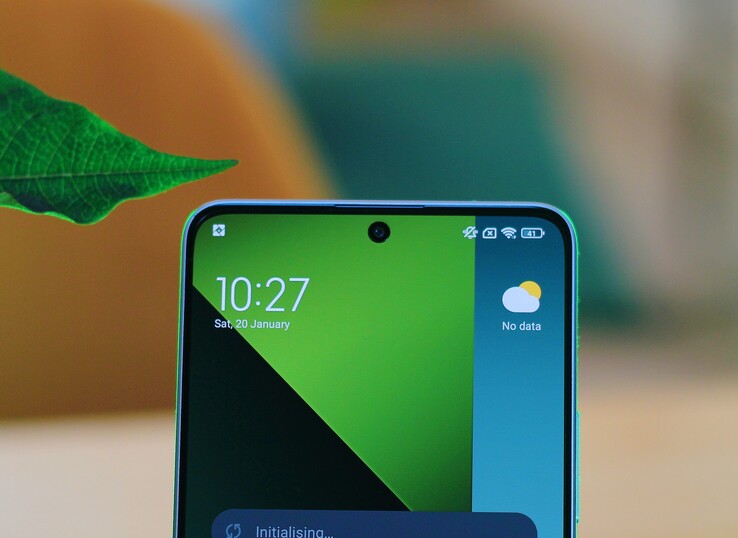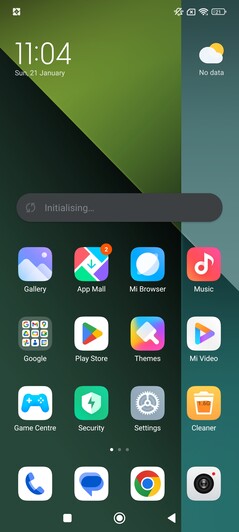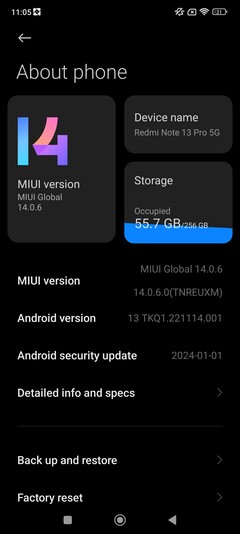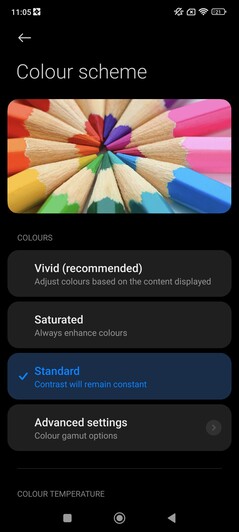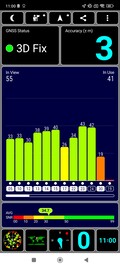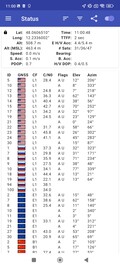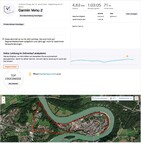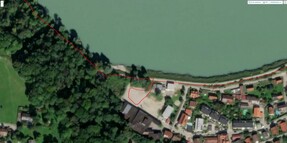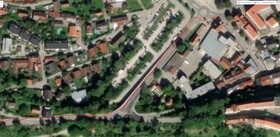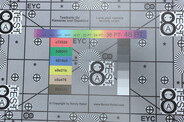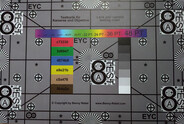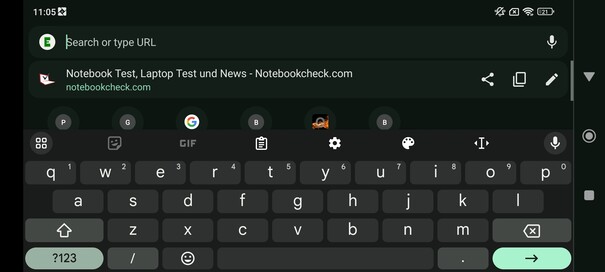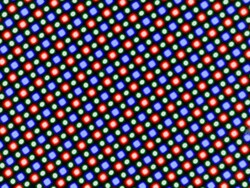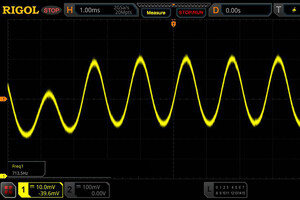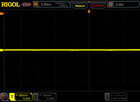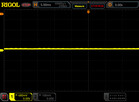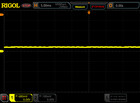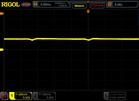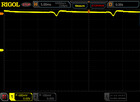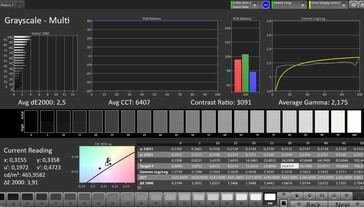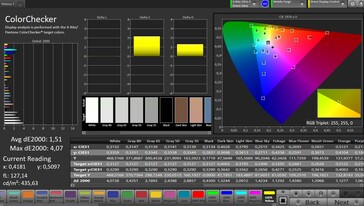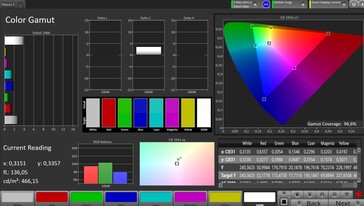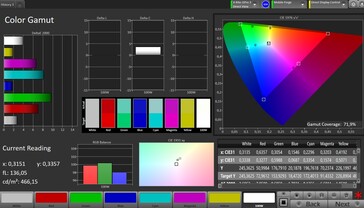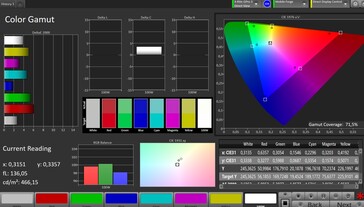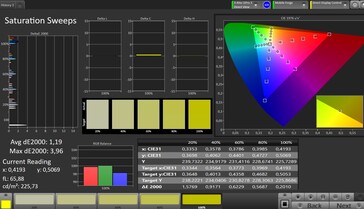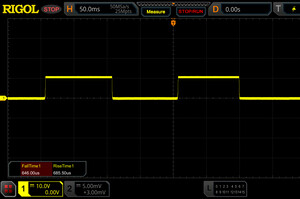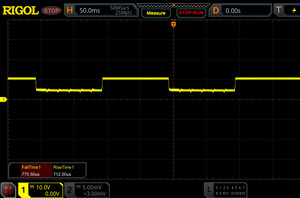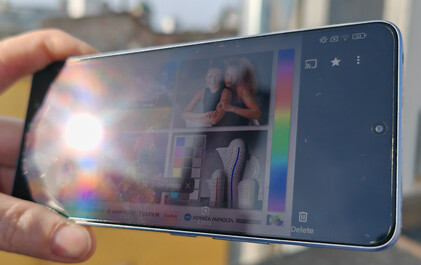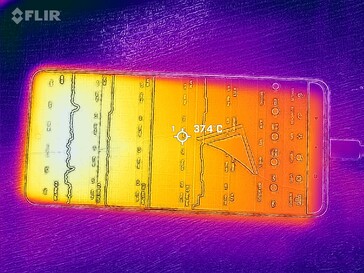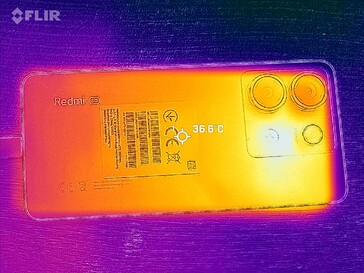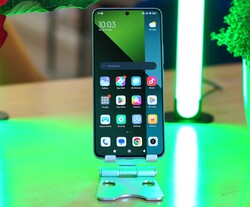Xiaomi Redmi Note 13 Pro 5G smartphone review – A modern midrange phone with a fabulous screen
In 2024, five new models will be in the Redmi Note series: Starting with the Redmi Note 13 4G for under £200 up to the Redmi Note 13 Pro+ 5G for around £400. In the last few years, the Redmi Note smartphones were able to position themselves as excellent midrange alternatives. After all, you get a modern case, good cameras and a premium AMOLED display at a good price.
In this review, we aim to take a look at the Xiaomi Redmi Note 13 Pro 5G, the second most expensive in this year's series, which has a manufacturer's price of around £340. Compared to the top-end model, you will have to make do with a somewhat slower SoC, lower charging performance, a non-curved display and a worse water and dust protection class.
Is the Redmi Note 13 Pro 5G still a bargain?
Possible competitors compared
Rating | Date | Model | Weight | Drive | Size | Resolution | Price |
|---|---|---|---|---|---|---|---|
| 85.8 % v7 (old) | 01 / 2024 | Xiaomi Redmi Note 13 Pro 5G SD 7s Gen 2, Adreno 710 | 187 g | 256 GB UFS 2.2 Flash | 6.67" | 2712x1220 | |
| 85.4 % v7 (old) | 04 / 2023 | Xiaomi Redmi Note 12 Pro 5G Dimensity 1080, Mali-G68 MP4 | 187 g | 128 GB UFS 2.2 Flash | 6.67" | 2400x1080 | |
| 84.6 % v7 (old) | 10 / 2023 | Motorola Edge 40 Neo Dimensity 7030, Mali-G610 MP3 | 170 g | 256 GB UFS 3.1 Flash | 6.55" | 2400x1080 | |
| 83.1 % v7 (old) | 09 / 2023 | Sony Xperia 10 V SD 695 5G, Adreno 619 | 159 g | 128 GB UFS 2.2 Flash | 6.10" | 2520x1080 | |
| 82 % v7 (old) | 05 / 2023 | Honor Magic5 Lite 5G SD 695 5G, Adreno 619 | 175 g | 128 GB UFS 2.2 Flash | 6.67" | 2400x1080 |
Case – Slim bezels frame the screen
The Xiaomi Redmi Note 13 Pro 5G's case has been fitted with a flat display which isn't curved at the edges. The chassis feels good in the hand and is well-finished. The frame consists of plastic and the screen is protected by robust Gorilla Glass Victus.
The frame and rear of the device come in three color variations: Black, soft violet or greenish blue. Our violet review sample has a matte glass back that is fingerprint-resistant. The case handles pressure applied to it without breaking a sweat and cannot be twisted.
In terms of the weight, nothing has changed compared to the predecessor: The device still tips the scales at 187 grams, but, size-wise, the smartphone has gotten a little more compact despite having the same-sized display. That suggests that Xiaomi has managed to further shrink the already slim display bezels its predecessor possessed. This gives the Redmi Note 13 Pro 5G a very premium look, especially for a phone in this price segment.
According to the manufacturer, IP54 dust and water protection is on board and this is a little better than the Redmi Note 12 Pro 5G. Nevertheless, we would advise against immersing the device in water.
Features – Interesting details
Xiaomi offers two different memory variants which are available in each of the aforementioned three colors:
- 8 GB RAM / 256 GB mass storage: £339
- 12 GB RAM / 512 GB mass storage: £399
Although we're dealing with LPDDR4X RAM, the memory controller also supports even faster LPDDR5 of up to 6,400 MHz. The mass storage is equipped with UFS 2.2 flash which ought to ensure good speeds for this price category. In the "Performance" section, we take a look at this in greater detail.
As we have already seen in many Xiaomi devices, there is a built-in IR blaster. This means the smartphone can also be used as a remote control for many other devices. The additional 3.5mm audio jack allows you to connect analogue headphones or speakers.
The USB-C port is only connected internally using USB 2.0 speed. A microSD reader to expand the memory is not included but, by contrast, you can use 2 SIM cards as well as an e-SIM.
Software – A ton of bloatware and security patches
Xiaomi installs its own MiUI 14 user interface which is still based on Android 13. At the time of reviewing, the security updates are, as of January 2024, bang up-to-date. The manufacturer promises three years of new Android versions and four years of security patches.
The smartphone comes with numerous preinstalled apps. This means that, out of the box, almost 50 GB of the device's storage are already occupied. Sure, you can delete or hide many of the third-party apps and Xiaomi programs, but this is something that will take up some of your time before you can enjoy a relatively pure system. Although experienced users won't like having many security questions built into advanced functions, this could make sense for newcomers.
For a phone that costs nearly £400, it's annoying that Xiaomi feels compelled to insert adverts in some of its own apps.
Communication and GNSS – Wi-Fi regression
WiFi 5 is the fastest Wi-Fi standard with which you can connect this smartphone to wireless networks.
Paired with our Asus ROG Rapture AXE11000 reference router, the test speeds are good and sometimes considerably faster than some similarly-priced comparison phones. However, the predecessor was a few hundred MBit/s quicker, due to it supporting WiFi6. It's in this area that Xiaomi has decided to make cuts to our review device.
As it is, it's not possible for the Xiaomi Remi Note 13 5G to fully take advantage of a gigabit internet connection, but, despite this, fast transfer speeds are feasible.
Close to the router, full reception strength is a given and websites can be loaded very quickly. If you move 10 meters further away and put 3 walls between you and the router, 3/4 of the reception lights are displayed and websites are loaded noticeably slower.
As a 5G smartphone, the Redmi Note 13 Pro 5G covers many frequencies meaning the device can be used in most European countries as well as more distant countries.
| Networking | |
| iperf3 receive AXE11000 | |
| Xiaomi Redmi Note 12 Pro 5G | |
| Average of class Smartphone (52 - 1857, n=182, last 2 years) | |
| Xiaomi Redmi Note 13 Pro 5G | |
| Honor Magic5 Lite 5G | |
| Sony Xperia 10 V | |
| iperf3 transmit AXE11000 | |
| Xiaomi Redmi Note 12 Pro 5G | |
| Average of class Smartphone (49.8 - 1806, n=182, last 2 years) | |
| Xiaomi Redmi Note 13 Pro 5G | |
| Honor Magic5 Lite 5G | |
| Sony Xperia 10 V | |
| iperf3 transmit AXE11000 6GHz | |
| Average of class Smartphone (508 - 1945, n=83, last 2 years) | |
| Motorola Edge 40 Neo | |
| iperf3 receive AXE11000 6GHz | |
| Average of class Smartphone (451 - 1864, n=83, last 2 years) | |
| Motorola Edge 40 Neo | |
When it comes to location, the Xiaomi phone communicates with all the big satellite networks, achieving a good outdoor accuracy of up to 3 meters.
In our practical test, we wanted to discover how accurately the Xiaomi Redmi Note 13 Pro 5G can determine its position, especially on the move. By way of exception, this time we were on foot, due to icy conditions. Our comparison device came in the form of the Garmin Venu 2 smartwatch, which has proven its location capabilities many times before.
The Redmi phone didn't do too badly either, mostly following our route very well and was only occasionally off the beaten track. You can use the Redmi Note 13 Pro 5G for navigation purposes, but there are certainly more accurate location devices available.
Telephone functions and voice quality - Sharp and clear
Xiaomi uses Google's standard app for telephone calls and, additionally, it offers settings in the security app to help users block incoming calls.
During telephone calls, the receiver sounds very clear and what we said was also received clearly at the other end. Nevertheless, we would advise against speaking too quietly otherwise the microphone has problems reproducing the voices correctly.
Calling via the speaker and the hands-free microphone is of a similarly good quality. In this area, the receiver's voice isn't distorted, even at maximum volume and our voices could be heard clearly as long as we didn't speak too softly.
Cameras – The 200-megapixel camera takes decent photos
On paper, the rear-facing 200-megapixel camera is one of the Xiaomi Redmi Note 13 Pro 5G's highlights.
However, it is seldom used to its full potential: Normally, only 12-megapixel photos are created meaning Samsung's Isocell HP3 sensor combines 16 pixels into one pixel to achieve greater light sensitivity. It's possible to use the maximum resolution by accessing a special mode but the camera notifies the user that good lighting is necessary and that the digital zoom can only be used to a very limited extent of up to 2x.
Photos taken with the main camera using the standard mode could certainly be a little brighter. But, overall, for this price range, the photos are quite appealing due to their level of detail and a nice bokeh effect. Under low-light conditions, very good brightening is, in fact, possible. The sharpness is quite good with only individual parts of the image suffering a reduction in quality.
The main camera can shoot videos in 4K at 30fps and 60fps in Full HD. All in all, the footage is good, the autofocus responds quickly and accurately and the adaptive brightness works without fail.
The 8-megapixel wide-angle camera takes decent snapshots but the sharpness falls off towards the edges. In addition to this, there is also a very low-resolution 2-megapixel macro camera.
The front-facing camera takes photos at a maximum of 16 megapixels. The images are bright and detailed.
Image comparison
Choose a scene and navigate within the first image. One click changes the position on touchscreens. One click on the zoomed-in image opens the original in a new window. The first image shows the scaled photograph of the test device.
Main camera plantMain camera environmentMain camera low lightWide-angle cameraThe main camera also had to prove itself again, this time in the testing lab: Under these conditions, the photos appeared sharp but the contrast could have been somewhat higher in certain areas of the image. Although the camera also takes good photos at 1 lux, the colors appear significantly darker.
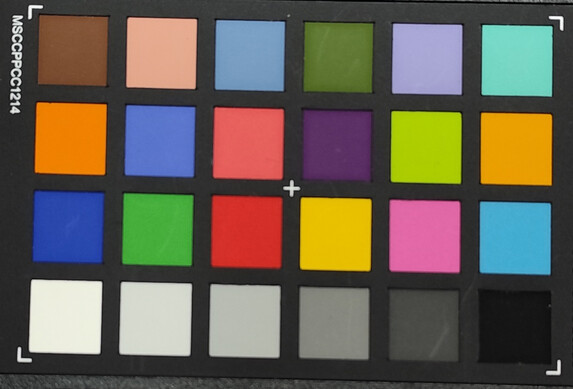
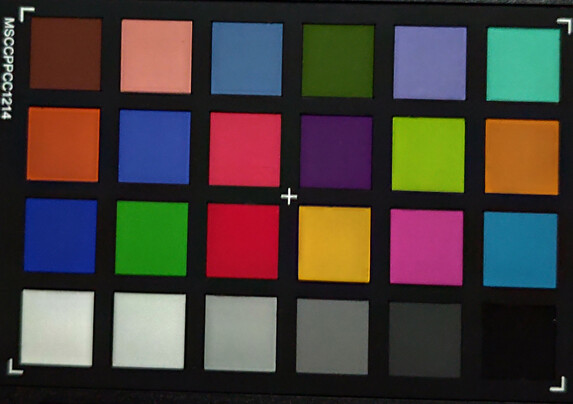
Accessories and warranty – A fast charger is included
Xiaomi hasn't compromised and, in addition to the appropriate 68-watt charger, it has also included a USB-C cable, a SIM tool and a silicon case.
In Europe, the manufacturer's devices come with a 24-month warranty.
Input devices & operation – A zippy touchscreen
The 120 Hz display has a 240 Hz touchscreen sampling rate and these are responsible for a very smooth smartphone operating experience. Even in its corners and at its sides, the display reacts promptly to inputs and the hardware buttons on the right-hand side of the case are reliable.
The fingerprint sensor is located underneath the display and as soon as the phone is moved in standby mode, the according area is highlighted. After a one-time fingerprint setup, unlocking takes place without delay and is very reliable. The face recognition is quickly set up and works flawlessly.
Display – A very bright OLED screen
For a long time, high-quality AMOLED displays have been one of Xiaomi's midrange trademarks and, in the meantime, other manufacturers have followed suit.
Nevertheless, the Xiaomi Redmi Note 13 Pro's AMOLED display is something special. Especially its high brightness levels of up to 1,205 cd/m² with a completely white screen and up to 1,345 cd/m² in smaller areas. This allows HDR content to be displayed very well on the panel.
Anyone who likes to use their smartphone to read in bed is protected from dazzlingly bright images by low screen brightness.
| |||||||||||||||||||||||||
Brightness Distribution: 90 %
Center on Battery: 1205 cd/m²
Contrast: ∞:1 (Black: 0 cd/m²)
ΔE ColorChecker Calman: 1.51 | ∀{0.5-29.43 Ø4.83}
ΔE Greyscale Calman: 2.5 | ∀{0.09-98 Ø5.1}
96.6% sRGB (Calman 2D)
Gamma: 2.175
CCT: 6407 K
| Xiaomi Redmi Note 13 Pro 5G AMOLED, 2712x1220, 6.7" | Xiaomi Redmi Note 12 Pro 5G OLED, 2400x1080, 6.7" | Motorola Edge 40 Neo pOLED, 2400x1080, 6.6" | Sony Xperia 10 V OLED, 2520x1080, 6.1" | Honor Magic5 Lite 5G AMOLED, 2400x1080, 6.7" | |
|---|---|---|---|---|---|
| Screen | 21% | -10% | 13% | 3% | |
| Brightness middle | 1205 | 938 -22% | 966 -20% | 933 -23% | 846 -30% |
| Brightness | 1177 | 939 -20% | 957 -19% | 944 -20% | 853 -28% |
| Brightness Distribution | 90 | 96 7% | 97 8% | 97 8% | 88 -2% |
| Black Level * | |||||
| Colorchecker dE 2000 * | 1.51 | 0.9 40% | 1.87 -24% | 1.1 27% | 1.3 14% |
| Colorchecker dE 2000 max. * | 4.07 | 1.6 61% | 4.34 -7% | 1.7 58% | 2.7 34% |
| Greyscale dE 2000 * | 2.5 | 1 60% | 2.5 -0% | 1.8 28% | 1.7 32% |
| Gamma | 2.175 101% | 2.25 98% | 2.272 97% | 2.29 96% | 2.19 100% |
| CCT | 6407 101% | 6350 102% | 6582 99% | 6611 98% | 6570 99% |
* ... smaller is better
Screen Flickering / PWM (Pulse-Width Modulation)
| Screen flickering / PWM detected | 713.5 Hz | ||
The display backlight flickers at 713.5 Hz (worst case, e.g., utilizing PWM) . The frequency of 713.5 Hz is quite high, so most users sensitive to PWM should not notice any flickering. In comparison: 53 % of all tested devices do not use PWM to dim the display. If PWM was detected, an average of 8327 (minimum: 5 - maximum: 343500) Hz was measured. | |||
A series of measurements with fixed zoom and various brightness settings
At low brightness, we detected noticeable PWM flickering which we measured to be 713.5 Hz. That is a very high frequency which ought to protect most users from problems. However, Xiaomi is again talking about a frequency of up to 1,920 Hz. As with the predecessor, we were unable to establish this measurement using our measuring equipment.
The display has very fast response times and using "Standard" mode, the color reproduction is also very easy on the eye with low deviations from the best-case scenario.
Display Response Times
| ↔ Response Time Black to White | ||
|---|---|---|
| 1.33 ms ... rise ↗ and fall ↘ combined | ↗ 0.65 ms rise | |
| ↘ 0.68 ms fall | ||
| The screen shows very fast response rates in our tests and should be very well suited for fast-paced gaming. In comparison, all tested devices range from 0.1 (minimum) to 240 (maximum) ms. » 6 % of all devices are better. This means that the measured response time is better than the average of all tested devices (20.5 ms). | ||
| ↔ Response Time 50% Grey to 80% Grey | ||
| 1.49 ms ... rise ↗ and fall ↘ combined | ↗ 0.78 ms rise | |
| ↘ 0.71 ms fall | ||
| The screen shows very fast response rates in our tests and should be very well suited for fast-paced gaming. In comparison, all tested devices range from 0.165 (minimum) to 636 (maximum) ms. » 5 % of all devices are better. This means that the measured response time is better than the average of all tested devices (32.1 ms). | ||
Outdoors, the smartphone often manages to reach high levels of luminosity, even in very bright environments and it usually displays its screen content reliably.
If you look at the display from a very wide angle, images are perfectly legible and the contrast level remains high.
Performance – A meagre upgrade
The Qualcomm Snapdragon 7s Gen 2 SoC, introduced recently, is very similar to last year's Snapdragon 7 Gen 1.
In our benchmarks, the processor mostly managed to secure front-running places among the similarly expensive comparison devices and the Redmi Note 13 Pro 5G is normally a little faster than its predecessor. Whether or not you actually notice that difference in everyday use is debatable. In any case, our review device was smooth to use and also offered enough power for somewhat more demanding apps.
| UL Procyon AI Inference for Android - Overall Score NNAPI | |
| Motorola Edge 40 Neo | |
| Xiaomi Redmi Note 12 Pro 5G | |
| Average of class Smartphone (1267 - 81594, n=142, last 2 years) | |
| Xiaomi Redmi Note 13 Pro 5G | |
| Average Qualcomm Snapdragon 7s Gen 2 (7223 - 9206, n=3) | |
| Sony Xperia 10 V | |
In terms of graphics performance, the new Adreno 710 achieves decent performance scores which allow the Redmi Note 13 Pro 5G to sprint to the front of the pack of competing devices. Demanding benchmarks also ran smoothly at Full HD but the chipset's power is insufficient for higher resolutions.
GFXBench (DX / GLBenchmark) 2.7: T-Rex Onscreen | 1920x1080 T-Rex Offscreen
GFXBench 3.0: on screen Manhattan Onscreen OGL | 1920x1080 1080p Manhattan Offscreen
GFXBench 3.1: on screen Manhattan ES 3.1 Onscreen | 1920x1080 Manhattan ES 3.1 Offscreen
GFXBench: on screen Car Chase Onscreen | 1920x1080 Car Chase Offscreen | on screen Aztec Ruins High Tier Onscreen | 2560x1440 Aztec Ruins High Tier Offscreen | on screen Aztec Ruins Normal Tier Onscreen | 1920x1080 Aztec Ruins Normal Tier Offscreen | 3840x2160 4K Aztec Ruins High Tier Offscreen
| 3DMark / Wild Life Extreme Unlimited | |
| Xiaomi Redmi Note 13 Pro 5G | |
| Motorola Edge 40 Neo | |
| Xiaomi Redmi Note 12 Pro 5G | |
| Sony Xperia 10 V | |
| Honor Magic5 Lite 5G | |
| 3DMark / Wild Life Extreme | |
| Xiaomi Redmi Note 13 Pro 5G | |
| Motorola Edge 40 Neo | |
| Xiaomi Redmi Note 12 Pro 5G | |
| Honor Magic5 Lite 5G | |
| Sony Xperia 10 V | |
| 3DMark / Wild Life Unlimited Score | |
| Xiaomi Redmi Note 13 Pro 5G | |
| Motorola Edge 40 Neo | |
| Xiaomi Redmi Note 12 Pro 5G | |
| Honor Magic5 Lite 5G | |
| Sony Xperia 10 V | |
| 3DMark / Wild Life Score | |
| Xiaomi Redmi Note 13 Pro 5G | |
| Motorola Edge 40 Neo | |
| Xiaomi Redmi Note 12 Pro 5G | |
| Honor Magic5 Lite 5G | |
| Sony Xperia 10 V | |
| 3DMark / Sling Shot Extreme (Vulkan) Unlimited Physics | |
| Xiaomi Redmi Note 13 Pro 5G | |
| Xiaomi Redmi Note 12 Pro 5G | |
| Motorola Edge 40 Neo | |
| 3DMark / Sling Shot Extreme (Vulkan) Unlimited Graphics | |
| Xiaomi Redmi Note 13 Pro 5G | |
| Motorola Edge 40 Neo | |
| Xiaomi Redmi Note 12 Pro 5G | |
| 3DMark / Sling Shot Extreme (Vulkan) Unlimited | |
| Xiaomi Redmi Note 13 Pro 5G | |
| Motorola Edge 40 Neo | |
| Xiaomi Redmi Note 12 Pro 5G | |
| 3DMark / Sling Shot Extreme (ES 3.1) Unlimited Physics | |
| Xiaomi Redmi Note 12 Pro 5G | |
| Motorola Edge 40 Neo | |
| Xiaomi Redmi Note 13 Pro 5G | |
| Honor Magic5 Lite 5G | |
| Sony Xperia 10 V | |
| 3DMark / Sling Shot Extreme (ES 3.1) Unlimited Graphics | |
| Xiaomi Redmi Note 13 Pro 5G | |
| Xiaomi Redmi Note 12 Pro 5G | |
| Motorola Edge 40 Neo | |
| Honor Magic5 Lite 5G | |
| Sony Xperia 10 V | |
| 3DMark / Sling Shot Extreme (ES 3.1) Unlimited | |
| Xiaomi Redmi Note 13 Pro 5G | |
| Xiaomi Redmi Note 12 Pro 5G | |
| Motorola Edge 40 Neo | |
| Honor Magic5 Lite 5G | |
| Sony Xperia 10 V | |
| GFXBench (DX / GLBenchmark) 2.7 / T-Rex Onscreen | |
| Motorola Edge 40 Neo | |
| Xiaomi Redmi Note 13 Pro 5G | |
| Xiaomi Redmi Note 12 Pro 5G | |
| Sony Xperia 10 V | |
| GFXBench (DX / GLBenchmark) 2.7 / T-Rex Offscreen | |
| Xiaomi Redmi Note 13 Pro 5G | |
| Motorola Edge 40 Neo | |
| Xiaomi Redmi Note 12 Pro 5G | |
| Sony Xperia 10 V | |
| GFXBench 3.0 / Manhattan Onscreen OGL | |
| Motorola Edge 40 Neo | |
| Xiaomi Redmi Note 12 Pro 5G | |
| Xiaomi Redmi Note 13 Pro 5G | |
| Sony Xperia 10 V | |
| GFXBench 3.0 / 1080p Manhattan Offscreen | |
| Motorola Edge 40 Neo | |
| Xiaomi Redmi Note 12 Pro 5G | |
| Xiaomi Redmi Note 13 Pro 5G | |
| Sony Xperia 10 V | |
| GFXBench 3.1 / Manhattan ES 3.1 Onscreen | |
| Xiaomi Redmi Note 13 Pro 5G | |
| Motorola Edge 40 Neo | |
| Xiaomi Redmi Note 12 Pro 5G | |
| Sony Xperia 10 V | |
| GFXBench 3.1 / Manhattan ES 3.1 Offscreen | |
| Motorola Edge 40 Neo | |
| Xiaomi Redmi Note 12 Pro 5G | |
| Sony Xperia 10 V | |
| Xiaomi Redmi Note 13 Pro 5G | |
| GFXBench / Car Chase Onscreen | |
| Xiaomi Redmi Note 12 Pro 5G | |
| Motorola Edge 40 Neo | |
| Xiaomi Redmi Note 13 Pro 5G | |
| Sony Xperia 10 V | |
| GFXBench / Car Chase Offscreen | |
| Xiaomi Redmi Note 13 Pro 5G | |
| Xiaomi Redmi Note 12 Pro 5G | |
| Motorola Edge 40 Neo | |
| Sony Xperia 10 V | |
| GFXBench / Aztec Ruins High Tier Onscreen | |
| Motorola Edge 40 Neo | |
| Xiaomi Redmi Note 13 Pro 5G | |
| Xiaomi Redmi Note 12 Pro 5G | |
| Honor Magic5 Lite 5G | |
| Sony Xperia 10 V | |
| GFXBench / Aztec Ruins High Tier Offscreen | |
| Xiaomi Redmi Note 13 Pro 5G | |
| Xiaomi Redmi Note 12 Pro 5G | |
| Motorola Edge 40 Neo | |
| Honor Magic5 Lite 5G | |
| Sony Xperia 10 V | |
| GFXBench / Aztec Ruins Normal Tier Onscreen | |
| Motorola Edge 40 Neo | |
| Xiaomi Redmi Note 12 Pro 5G | |
| Xiaomi Redmi Note 13 Pro 5G | |
| Honor Magic5 Lite 5G | |
| Sony Xperia 10 V | |
| GFXBench / Aztec Ruins Normal Tier Offscreen | |
| Xiaomi Redmi Note 13 Pro 5G | |
| Motorola Edge 40 Neo | |
| Xiaomi Redmi Note 12 Pro 5G | |
| Honor Magic5 Lite 5G | |
| Sony Xperia 10 V | |
| GFXBench / 4K Aztec Ruins High Tier Offscreen | |
| Xiaomi Redmi Note 13 Pro 5G | |
| Motorola Edge 40 Neo | |
| Xiaomi Redmi Note 12 Pro 5G | |
| Honor Magic5 Lite 5G | |
| Sony Xperia 10 V | |
When it comes to surfing the internet, the Redmi phone is also impressive: Pages load very quickly and, in most cases, images have already loaded when scrolling.
| Jetstream 2 - 2.0 Total Score | |
| Average of class Smartphone (13.8 - 387, n=154, last 2 years) | |
| Xiaomi Redmi Note 13 Pro 5G (Chrome 120) | |
| Average Qualcomm Snapdragon 7s Gen 2 (82.1 - 118.2, n=4) | |
| Motorola Edge 40 Neo (Chrome 118) | |
| Sony Xperia 10 V (Chrome 116) | |
| Xiaomi Redmi Note 12 Pro 5G (Chrome 111) | |
| Speedometer 2.0 - Result | |
| Average of class Smartphone (15.2 - 585, n=137, last 2 years) | |
| Average Qualcomm Snapdragon 7s Gen 2 (85.5 - 110, n=3) | |
| Motorola Edge 40 Neo (Chrome 118) | |
| Xiaomi Redmi Note 13 Pro 5G (Chrome 120) | |
| Sony Xperia 10 V (Chrome 116) | |
| Xiaomi Redmi Note 12 Pro 5G (Chrome 111) | |
| WebXPRT 4 - Overall | |
| Average of class Smartphone (22 - 273, n=149, last 2 years) | |
| Xiaomi Redmi Note 13 Pro 5G (Chrome 120) | |
| Motorola Edge 40 Neo (Chrome 118) | |
| Average Qualcomm Snapdragon 7s Gen 2 (91 - 115, n=4) | |
| Xiaomi Redmi Note 12 Pro 5G (Chrome 111) | |
| Sony Xperia 10 V (Chrome 116) | |
| Octane V2 - Total Score | |
| Average of class Smartphone (2228 - 100368, n=204, last 2 years) | |
| Xiaomi Redmi Note 13 Pro 5G (Chrome 120) | |
| Average Qualcomm Snapdragon 7s Gen 2 (31340 - 36202, n=5) | |
| Motorola Edge 40 Neo (Chrome 118) | |
| Xiaomi Redmi Note 12 Pro 5G (Chrome 111) | |
| Sony Xperia 10 V (Chrome 116) | |
| Honor Magic5 Lite 5G (Chrome 112) | |
| Mozilla Kraken 1.1 - Total | |
| Xiaomi Redmi Note 12 Pro 5G (Chrome 111) | |
| Sony Xperia 10 V (Chrome 116) | |
| Motorola Edge 40 Neo (Chrome 118) | |
| Average of class Smartphone (277 - 28190, n=158, last 2 years) | |
| Average Qualcomm Snapdragon 7s Gen 2 (1091 - 1478, n=4) | |
| Xiaomi Redmi Note 13 Pro 5G (Chrome 120) | |
* ... smaller is better
Likewise, the UFS 2.2 storage belongs to the fastest in the Xiaomi Redmi Note 13 Pro 5G's price segment. This shortens loading and data transfer times and copying tasks are performed quickly.
| Xiaomi Redmi Note 13 Pro 5G | Xiaomi Redmi Note 12 Pro 5G | Motorola Edge 40 Neo | Sony Xperia 10 V | Honor Magic5 Lite 5G | Average 256 GB UFS 2.2 Flash | Average of class Smartphone | |
|---|---|---|---|---|---|---|---|
| AndroBench 3-5 | 5% | 17% | -38% | -39% | -1% | 80% | |
| Sequential Read 256KB | 946.8 | 1008.8 7% | 1004.4 6% | 444.54 -53% | 486.17 -49% | 921 ? -3% | 2158 ? 128% |
| Sequential Write 256KB | 808.2 | 865.59 7% | 930.9 15% | 438.02 -46% | 420.44 -48% | 734 ? -9% | 1749 ? 116% |
| Random Read 4KB | 239.2 | 241.83 1% | 279.5 17% | 175.72 -27% | 171.13 -28% | 230 ? -4% | 294 ? 23% |
| Random Write 4KB | 220.5 | 234.21 6% | 284.1 29% | 165.15 -25% | 149.12 -32% | 248 ? 12% | 336 ? 52% |
Games – Sometimes at 60fps
We also downloaded some games onto the Redmi smartphone to see how they would run. The device falls short of being able to achieve 60fps in all settings and, likewise, it's just as hard to hit even higher framerates.
However, if you can lower your expectations and choose lower graphics settings, you can enjoy both PUBG mobile and Genshin Impact at a relatively smooth 60fps. By contrast, although Diablo Immortal is limited to 30fps in all settings, it does run smoothly. We measured the frame rates using the GameBench software.
Both touchscreen and motion controls work flawlessly.
Emissions – Throttling is absent in the Redmi Note 13 Pro 5G
Temperature
Under longer periods of high load, the Xiaomi Redmi Note 13 Pro 5G can get noticeably warm, but, at a maximum of 43.4 °C, the waste heat is never critical.
The smartphone also showed no difficulty in maintaining its performance over lengthier load times: After 20 runs in the 3DMark stress test, we saw very similar scores to those recorded at the start.
(±) The maximum temperature on the upper side is 43.4 °C / 110 F, compared to the average of 35.1 °C / 95 F, ranging from 21.9 to 63.7 °C for the class Smartphone.
(±) The bottom heats up to a maximum of 42.9 °C / 109 F, compared to the average of 33.9 °C / 93 F
(+) In idle usage, the average temperature for the upper side is 24.4 °C / 76 F, compared to the device average of 32.9 °C / 91 F.
3DMark Wild Life stress test
| 3DMark | |
| Wild Life Stress Test Stability | |
| Honor Magic5 Lite 5G | |
| Sony Xperia 10 V | |
| Xiaomi Redmi Note 12 Pro 5G | |
| Xiaomi Redmi Note 13 Pro 5G | |
| Motorola Edge 40 Neo | |
| Wild Life Extreme Stress Test | |
| Xiaomi Redmi Note 13 Pro 5G | |
| Xiaomi Redmi Note 12 Pro 5G | |
| Motorola Edge 40 Neo | |
| Sony Xperia 10 V | |
| Honor Magic5 Lite 5G | |
Speakers
The Redmi handset's speakers comprise dedicated speakers on the bottom edge and the headphone area. All in all, the sound can be described as good and well-balanced without breaking any records. The sound doesn't suffer from being over-modulated, even at maximum volume.
With classical music, you can pick out the individual instruments. With pop music, the vocals are present and it's easy to understand the actors when watching movies - although the effects would have benefited from somewhat additional oomph. This is where you notice the smartphone's small speaker lacks bass.
Anyone on the hunt for better sound should simply consider connecting headphones or speakers via the 3.5mm port or Bluetooth 5.2. The device has more or less all of the current audio codes at its disposal, like, for example, Hi-Res codecs such as LHDC or aptX HD.
Xiaomi Redmi Note 13 Pro 5G audio analysis
(±) | speaker loudness is average but good (78.2 dB)
Bass 100 - 315 Hz
(-) | nearly no bass - on average 20% lower than median
(±) | linearity of bass is average (10.9% delta to prev. frequency)
Mids 400 - 2000 Hz
(±) | higher mids - on average 6.8% higher than median
(+) | mids are linear (6.2% delta to prev. frequency)
Highs 2 - 16 kHz
(+) | balanced highs - only 2.4% away from median
(±) | linearity of highs is average (8.6% delta to prev. frequency)
Overall 100 - 16.000 Hz
(±) | linearity of overall sound is average (19.1% difference to median)
Compared to same class
» 23% of all tested devices in this class were better, 9% similar, 68% worse
» The best had a delta of 12%, average was 36%, worst was 134%
Compared to all devices tested
» 44% of all tested devices were better, 7% similar, 49% worse
» The best had a delta of 4%, average was 24%, worst was 134%
Honor Magic5 Lite 5G audio analysis
(+) | speakers can play relatively loud (90.7 dB)
Bass 100 - 315 Hz
(-) | nearly no bass - on average 29.1% lower than median
(+) | bass is linear (6.1% delta to prev. frequency)
Mids 400 - 2000 Hz
(+) | balanced mids - only 3.9% away from median
(+) | mids are linear (4.7% delta to prev. frequency)
Highs 2 - 16 kHz
(±) | higher highs - on average 7.1% higher than median
(+) | highs are linear (6.2% delta to prev. frequency)
Overall 100 - 16.000 Hz
(±) | linearity of overall sound is average (20.6% difference to median)
Compared to same class
» 34% of all tested devices in this class were better, 9% similar, 57% worse
» The best had a delta of 12%, average was 36%, worst was 134%
Compared to all devices tested
» 53% of all tested devices were better, 8% similar, 39% worse
» The best had a delta of 4%, average was 24%, worst was 134%
Battery life – Quick charging and good staying power
Power consumption
When it comes to energy efficiency, the Xiaomi Redmi Note 13 Pro 5G finds itself in the middle of the pack: The basic consumption is a little on the high side while the average load consumption is quite low. At full power, the smartphone can drain the battery quite quickly.
To recharge the battery, a 67-watt charger is included. This allows the phone to achieve a full charge within a maximum of 45 minutes. The Redmi device comes without wireless charging.
| Off / Standby | |
| Idle | |
| Load |
|
Key:
min: | |
| Xiaomi Redmi Note 13 Pro 5G 5100 mAh | Xiaomi Redmi Note 12 Pro 5G 5000 mAh | Motorola Edge 40 Neo 5000 mAh | Sony Xperia 10 V 5000 mAh | Average Qualcomm Snapdragon 7s Gen 2 | Average of class Smartphone | |
|---|---|---|---|---|---|---|
| Power Consumption | -15% | -11% | 11% | -30% | -35% | |
| Idle Minimum * | 1.3 | 0.99 24% | 1 23% | 0.56 57% | 1.333 ? -3% | 0.868 ? 33% |
| Idle Average * | 1.4 | 2.03 -45% | 1.2 14% | 0.91 35% | 1.633 ? -17% | 1.426 ? -2% |
| Idle Maximum * | 1.6 | 2.08 -30% | 1.3 19% | 0.98 39% | 2.13 ? -33% | 1.588 ? 1% |
| Load Average * | 2.5 | 3.97 -59% | 5.2 -108% | 5.34 -114% | 4.47 ? -79% | 7.17 ? -187% |
| Load Maximum * | 9.1 | 5.85 36% | 9.2 -1% | 5.46 40% | 10.8 ? -19% | 10.8 ? -19% |
* ... smaller is better
Power consumption: Geekbench (150 cd/m²)
Power consumption: Idle (150 cd/m²)
Battery life
Compared to the predecessor, the battery is slightly bigger with the phone now having access to 5,100 mAh. That was sufficient for a runtime of 16 hours and 42 minutes in our Wi-Fi test with a regulated display brightness of 150 cd/m².
However, under load, the smartphone is, in fact, less efficient than other competing phones in its price category: Despite this, it's possible to play games or run very demanding apps for 5 hours.
In everyday use, the overall good battery life and, above all, the speedy charging times should mean you have no reason to fear the battery running out of juice.
| Xiaomi Redmi Note 13 Pro 5G 5100 mAh | Xiaomi Redmi Note 12 Pro 5G 5000 mAh | Motorola Edge 40 Neo 5000 mAh | Sony Xperia 10 V 5000 mAh | Honor Magic5 Lite 5G 5100 mAh | |
|---|---|---|---|---|---|
| Battery Runtime | -6% | 12% | 53% | -19% | |
| Reader / Idle | 1786 | 1598 -11% | 2444 37% | 4067 128% | |
| H.264 | 1142 | 1043 -9% | 1232 8% | 1615 41% | |
| WiFi v1.3 | 1002 | 978 -2% | 864 -14% | 1157 15% | 816 -19% |
| Load | 307 | 299 -3% | 355 16% | 388 26% |
Pros
Cons
Verdict – The midrange smartphone only has small weaknesses
At the start of 2024, Xiaomi has already set the bar a little higher for midrange smartphones with its Xiaomi Redmi Note 13 Pro 5G: Currently, it's difficult to find such a bright AMOLED display and a high-resolution camera elsewhere.
The light case and its slim bezels are a standout and the display is protected from damage thanks to Gorilla Glass Victus. The generous storage options (up to 512 GB UFS 2.2 flash), the 3.5mm audio jack connector and an IR blaster are also (still) something special in this price segment.
What's also nice this year is that Xiaomi has awarded its midrange phone e-SIM support. However, it's a pity the Wi-Fi speed is considerably slower compared to last year's model.
The software is also a mixed bag: The good news is that Xiaomi has expanded its update policy and, at the time of our review, the smartphone possesses the most up-to-date security patches. Nevertheless, we find ourselves asking the question if it's really necessary to have dozens of preinstalled third-party apps as part of your own program.
The main camera takes decent photos and good selfies are also possible. Likewise, the handset offers acceptable location accuracy as well as good voice quality.
Despite its plastic case, the Xiaomi Redmi Note 13 Pro 5G is a premium midrange smartphone without any real weaknesses.
The Xiaomi Redmi Note 12 Pro 5G predecessor had few cut corners but is more than £150 cheaper, at the time of reviewing. With its even faster display and W-Fi, the Motorola Edge 40 Neo is also impressive.
Price and availability
At the time of review, the Xiaomi Redmi Note 13 Pro 5G with 256 GB mass storage can be had on amazon.uk for £299 (Amazon exclusive).
Xiaomi Redmi Note 13 Pro 5G
- 01/23/2024 v7 (old)
Florian Schmitt
Transparency
The selection of devices to be reviewed is made by our editorial team. The test sample was provided to the author as a loan by the manufacturer or retailer for the purpose of this review. The lender had no influence on this review, nor did the manufacturer receive a copy of this review before publication. There was no obligation to publish this review. We never accept compensation or payment in return for our reviews. As an independent media company, Notebookcheck is not subjected to the authority of manufacturers, retailers or publishers.
This is how Notebookcheck is testing
Every year, Notebookcheck independently reviews hundreds of laptops and smartphones using standardized procedures to ensure that all results are comparable. We have continuously developed our test methods for around 20 years and set industry standards in the process. In our test labs, high-quality measuring equipment is utilized by experienced technicians and editors. These tests involve a multi-stage validation process. Our complex rating system is based on hundreds of well-founded measurements and benchmarks, which maintains objectivity. Further information on our test methods can be found here.




